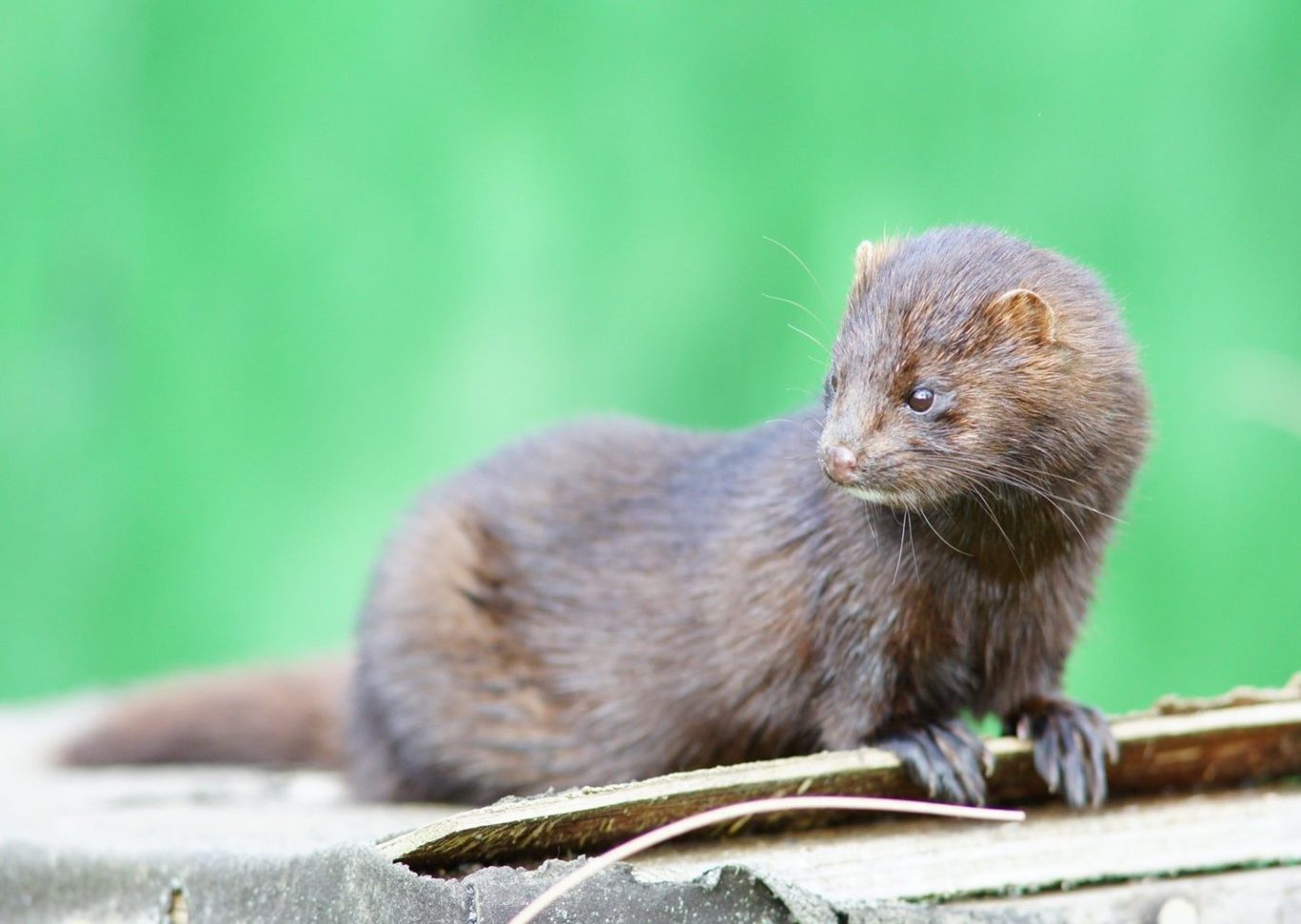American Mink - Neovison vison
Key Findings
American mink (Neovison vison) (fig. 1) are a medium sized member of the mustelid family along with otter, badger, and pine marten. American mink are characterised by their elongated body covered in dark brown fur, sometimes with a white patch on the chin (SISI, n.d. a).
Range & Distribution:
Hailing from North America, American mink were introduced to the UK to be used in fur farms in 1929. With escapes and deliberate releases, mink first began breeding in the wild in 1962 in Aberdeenshire. Mink fur farms were banned in 2000 under the Fur Farming (Prohibition) Act, but American mink have become widespread throughout Scotland and the UK (barring the furthest North Scotland and some Scottish islands) (fig. 2) (SISI, n.d. a).
Habitat & Diet:
American mink are highly efficient predators, feeding on prey from birds and bird eggs, to fish, crabs, frogs, mice, and small mammals (NatureScot, 2024). In particular they have had significant impacts upon Scotland's water vole (Arvicola amphibius) population (NatureScot, 2023). They are semi-aquatic mammals, living near to waterbodies such as rivers, lakes and coastlines (SISI, n.d. a). As such Scotland makes an ideal habitat for the species, with abundant prey, suitable habitat, and no natural predators of mink (Toth, 2023). In America, mink populations are controlled by larger predators such as bobcats and coyotes, and without these larger predators in the UK the mink populations remains unchecked (Cubie, 2004).
Management:
The two main mink control projects in Scotland are the Scottish Invasive Species Intitative and the Hebridean Mink Project. The first mink control project took place in 2004 along the River Ythan in Aberdeenshire. This project had a significantly positive effect on the local water vole population, and the mink monitoring and trapping technique was adopted nationwide (SISI, n.d. a). Trapping involves placing mink rafts – a small, floating mink sized tunnel - in areas where mink are thought to occur (fig. 3). If the mink raft records mink footprints, it will be replaced with a live trap which is checked regularly. Should a mink be caught, it will be put down humanely (SISI, n.d. b). Between 2006-2015, 1600 mink were caught and disposed of (Oliver, 2015).
Harrington (2019) found that despite ongoing mink control efforts, data is currently too limited to say for certain whether mink numbers are declining in the UK. However, there are predictions that abundance of mink will fall to less than 10% of the intitial population after 10 years of continued control measures (Oliver, 2015; SISI, n.d. a).

fig. 1: (Peter Trimming) - American Mink (Neovison vison)

fig. 2: NBN Atlas (2024) - Records of American Mink (1800 - 2024)

fig. 3: SISI (n.d. b) - Distribution of Mink Raft and Traps across Scotland (2018-19)
Notes
Linked Information Sheets
Key sources of Information
Cubie (2004) Messages From Mink
Harrington (2019) Current status of American mink in Great Britain
NatureScot (2024) American Mink
NBN Atlas (2024) Neovison vison Distribution Map
Oliver, M. (2015) A Review of Large Scale Coordinate Mink Control in Scotland 2006-2015.
SISI (n.d. b) Mink Control Project
Toth (2023) Fight against invasive American mink threatening Scotland's wildlife
Reviewed on/by
09/06/2024 by Cathryn Lovie
19/08/2024 by Ian Hay
09/01/2025 by Charlotte Tomlinson (updated)
17/01/2025 by Mariia Topol
Status
First Draft
To report errors, highlight new data, or discuss alternative interpretations, please complete the form below and we will aim to respond to you within 28 days
Contact us
Telephone: 07971149117
E-mail: ian.hay@stateofthecoast.scot
We need your consent to load the translations
We use a third-party service to translate the website content that may collect data about your activity. Please review the details in the privacy policy and accept the service to view the translations.

